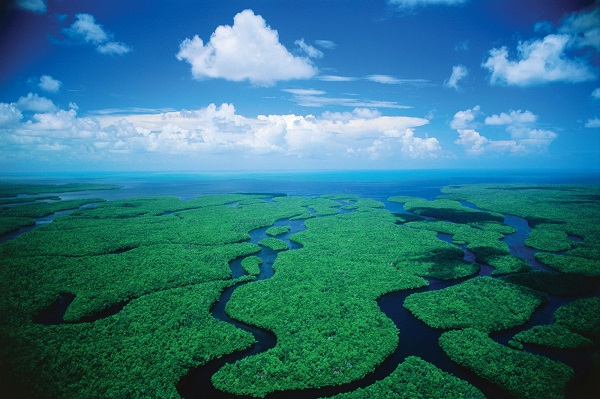Our new project funded by the Department of Energy seeks to synthesize wetland carbon data and models. We are using probabilistic models of wetlandscape hydrologic and biogeochemical behaviors to predict landscape processes in response to time-varying patterns of inundation. Our model-experiment synthesis couples dense field observations and predictions from Earth-system models. A key outcome is to better represent dynamic biogeochemical functions and their spatial coupling in models of land-surface dynamics and hydrological processes in low-relief wetlandscapes.
Interested in applying to work on this project? Read more here.
Wetlands sit at the interface of terrestrial and aquatic systems, creating conditions known to substantially influence the storage, transformation, and export of carbon (C). While individual wetland functions are well studied, most low relief landscapes consist of a mosaic of many wetlands, streams and uplands, referred to collectively as “wetlandscapes”. Variability in topography within and between wetlands coupled with time-varying water levels results in heterogeneity in C cycling as the location and length of the terrestrial-aquatic interface (TAI) shifts overlapping spatial variation in primary production and soil organic C stocks. This has important but poorly studied implications for the timing, location, and magnitude of gas emissions (e.g., CO2 and CH4). Moreover, wetlandscapes are characterized by prolonged surface storage of water during which groundwater flowpaths dominate export.
However, episodic surface connectivity, which occurs when water levels exceed critical elevation thresholds, activates rapid surface flowpaths that export significant mass of dissolved C (in organic and inorganic forms). Because wetlands, especially small ones, are hot-spots for C cycling, and because hydroclimatic forcing creates hot-moments for C storage and export, TAI migration across wetlandscapes represents a key facet of regional C dynamics. However, patterns and mechanisms of these transient spatial dynamics are poorly understood, and largely ignored in Earth systems models.
Our group will be addressing this knowledge gap by examining TAI dynamics and the emergence of wetlandscape C processing functions.

